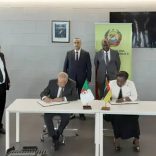Mozambique: Road Fund owes 4.3 million dollars to contractors in Niassa - Watch
Just over a third of Mozambique’s adult population has a bank account

File photo
About 36 percent of Mozambique’s adult population has a bank account, a figure the country’s two largest banks want to see grow, sources have told Lusa.
“This percentage is still far lower than that of most of the countries of the region,” a BCI source told Lusa.
Millennium BIM also notes that “the rate of banking has been growing significantly in recent years, but is still relatively low”.
Figures on the number of bank accounts in the country are included in the latest Bank of Mozambique statistical bulletin, published in June. According to the bulletin, 2017 figures reveal that there are around 5.3 million accounts in banking institutions, 223,000 of which are foreign currency accounts.
One hundred percent coverage “would be ideal”, BIM admits, but the bank would like first to see parity with levels in other Southern African Development Community (SADC) countries like Mauritius, with 85 percent, South Africa (75 percent) and Namibia (62 percent).
In order to get there, the institution suggests that “the entities that invest the most” in the promotion of account opening should be rewarded, perhaps with tax or other incentives.
Continuing to pay the salaries of state agents through bank accounts and installing basic infrastructure to expand the banking network, especially into rural areas, are other measures proposed.
BIM considers “concerted action by the public sector and the private sector” essential, as well as “investing in financial education” and “increasing the representativeness of formal financial institutions in areas of greater population concentration and economic potential”.
These institutions consider having a bank account a basic tool “to promote the economic and social development of the country,” and to allow access to financing, cards, electronic transactions and foreign exchange.
“The advantages are endless,” says the BCI. “The economy is tending towards greater formalisation” and there is a “better perception of the level of economic development” of the country.
The Bank of Mozambique bulletin indicates that electronic money accounts like those associated with mobile phones, are more popular, and already have 44 percent reach within the adult population.
Banks also offer mobile services that can reach places without basic infrastructure, but “a traditional bank account and a mobile money account are different products with different functionalities,” BIM notes.
BCI agrees that mobile accounts have limitations. “Amounts to be transacted and access to other financial services such as credit can never completely replicate traditional bank accounts,” it says.
BCI and BIM were the only two banks in the group contacted by Lusa to answer questions.













Leave a Reply
Be the First to Comment!
You must be logged in to post a comment.
You must be logged in to post a comment.